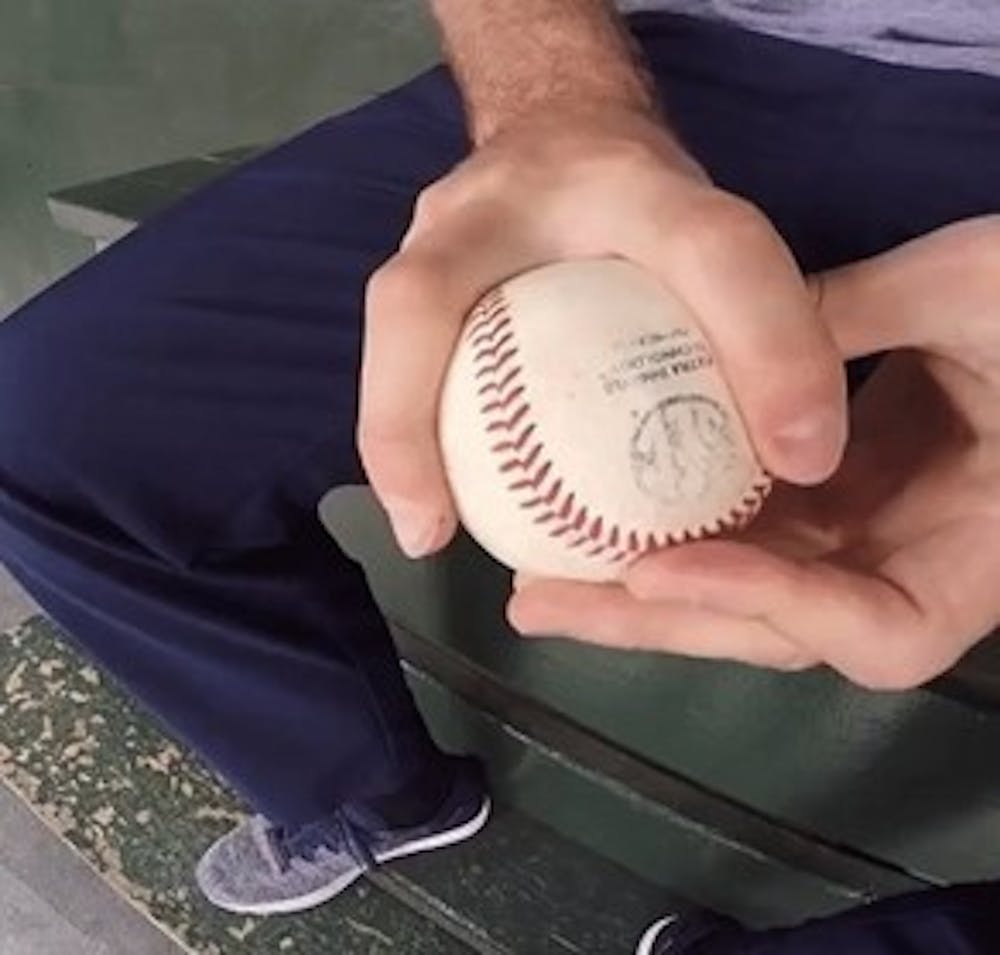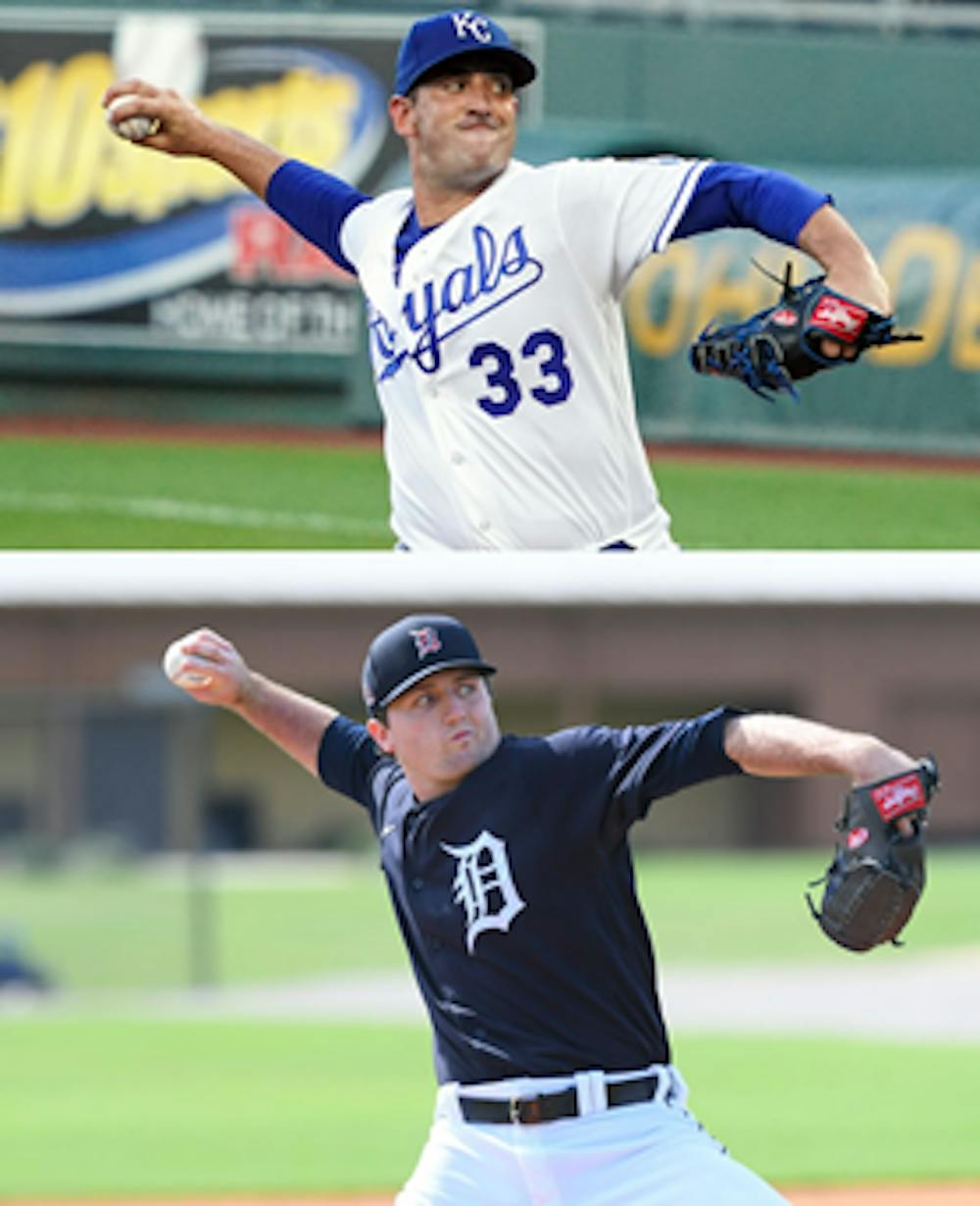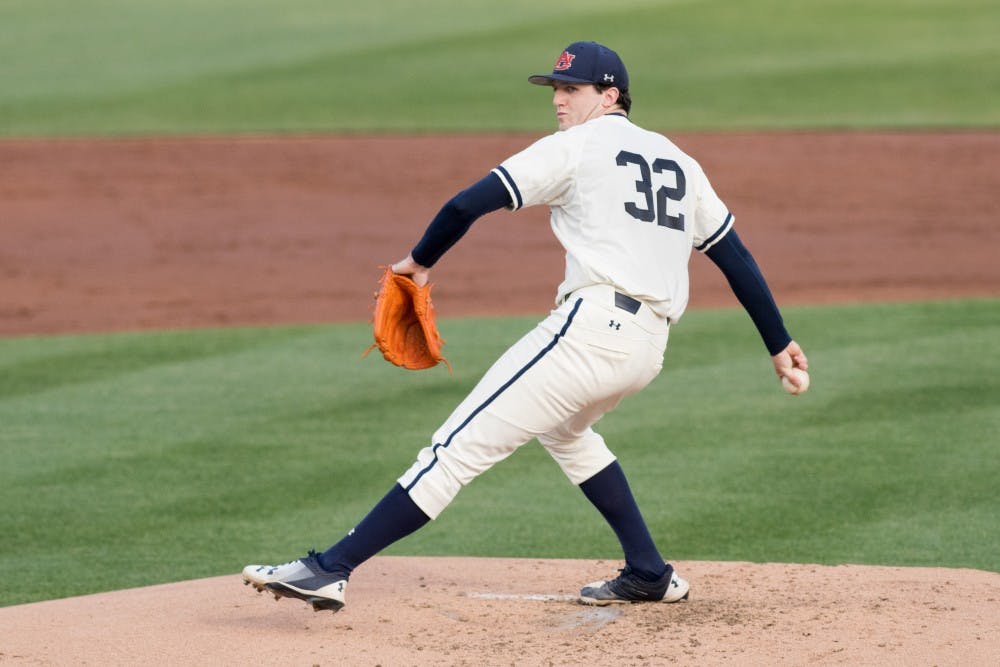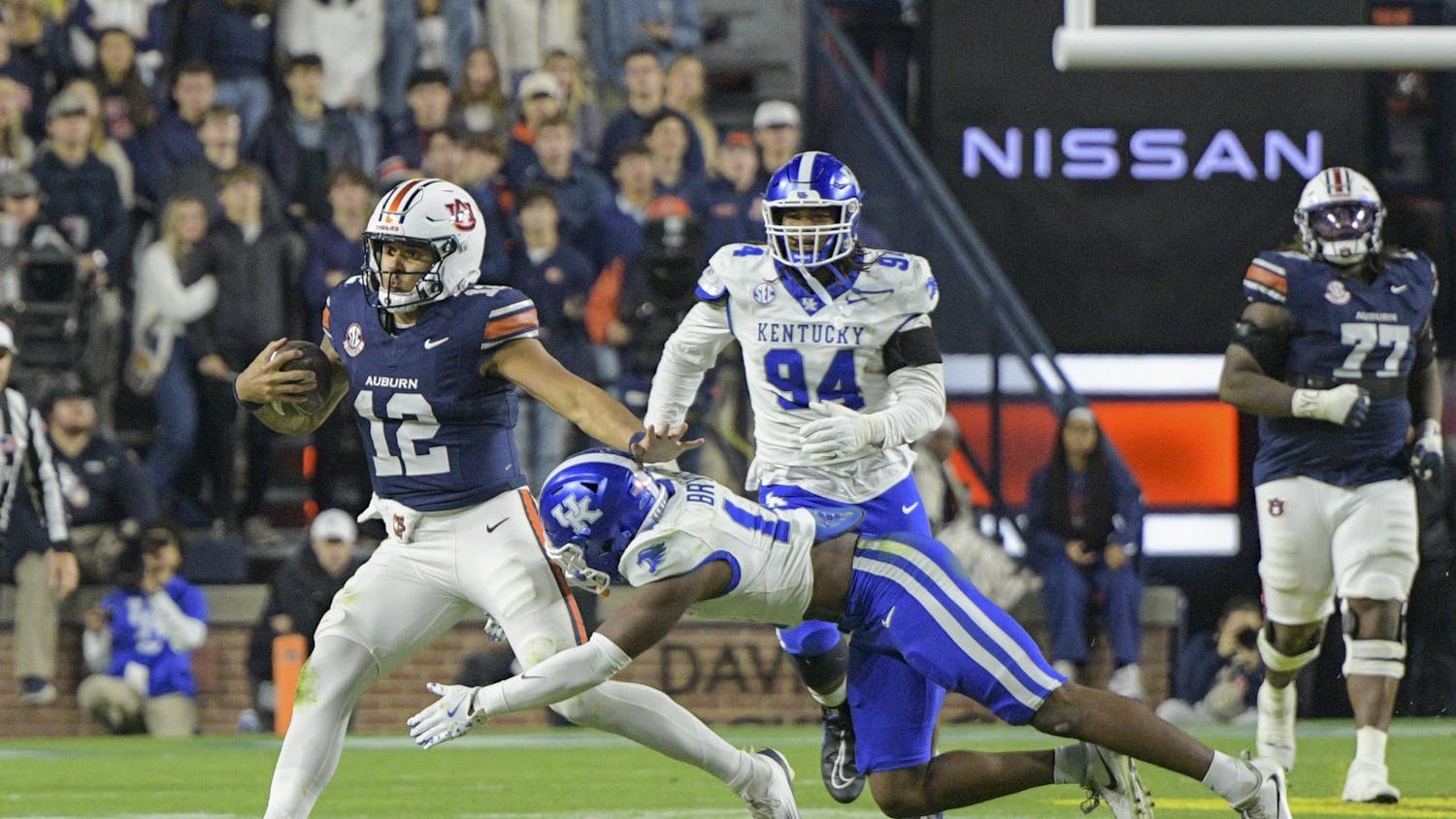In three years at Auburn, Springville native Casey Mize went from going undrafted out of high school to being one of the top prospects in 2018. After a junior year where he finished with a 3.30 ERA, he was selected first overall by the Detroit Tigers in the 2018 MLB Entry Draft.
He blazed through Detroit’s farm system, posting a 2.75 ERA from High A to AA. After COVID-19 shut down MiLB teams, he was placed in Detroit’s alternate training site in Toledo.
After their rotation suffered heavy injury losses in 2020, Mize was called on to make his big-league debut against the White Sox on August 19th. After a 7 strikeout performance in 4.1 IP, he started six more games to end the season.
While he showed flashes of what made him one of the most sought-after prospects in college baseball, he finished his rookie year with an 6.99 ERA. This number was below any qualified pitcher in the MLB in 2020.
While this number was over a small sample, only 28.1 IP, and was in a rookie year with a variety of COVID-19 related issues, many Tiger fans are concerned about his numbers and development.
MLB’s Baseball Savant tracked all 543 pitches of Mize’s rookie year, and compared his results to all of the pitchers across the league. This data provides insight on his rookie numbers, and can help determine how his future development will progress.
As the 2021 season draws closer, here’s the good, the bad, and the ugly of Casey Mize’s future.
Good
Mize’s strengths, like many other athletes, starts with his lower body. From high school, he was always shown to have an incredibly athletic lower body. This strength not only gives him plenty of velocity, but also allows him to repeat his delivery consistently.
The other primary strength is his mix of pitches. He throws a four-seam fastball, sinker, splitter, cutter, and a curveball. He throws all of these pitches at least 11% of the time. This level of variety is very rare for MLB pitchers, let alone prospects in their first year of the league. While his mix has seen some modifications since being drafted, he has shown an advanced ability to learn pitches since he was in Auburn.
With all of these pitchers having tremendous movement, and four of them being thrown within 8 MPH of each other, he’s able to prevent hitters from making solid guesses on his next pitch.
His fastball sits at around 93 MPH but has touched 97. While that’s not exactly fast at the major league level, he does use tremendous command to both sides of the plate and it does move more than most fastballs. So far in spring training, he has been throwing closer to 95. This pitch was his best in 2020 with batters only hitting .143 against it.
While his fastball was his best pitch, Mize’s splitter is his most dangerous, and is probably what earned him the first overall pick. The splitter is a very difficult pitch to learn due to its odd grip. Splitters look like fastballs out of the hand, but dive to the ground just before reaching the plate. This late movement can cause even the best hitters in the world to look foolish. He earned his first strikeout against Yoan Moncada in his debut.
Of all the splitters Mize threw in 2020, hitters swung and missed at 28% of them. This whiff rate is partially due to the massive amount of movement he can create. Of all the pitchers who threw splitters in 2020, only Minnesota’s Tyler Clippard created more movement on average, and his breaks much earlier than Mize’s.
His cutter was added in his junior year at Auburn. While the movement isn’t as radical as his splitter, it is a great compliment to his other pitches, and he’s able to locate it relatively well. This ability to learn new pitches and develop them quickly is thanks to his overall feel for pitching. His attitude and work ethic has drawn nothing but praise from the Detroit organization.
Bad
His sinker was added while he was in the minors in order to compliment his other pitches. As the name implies, it moves slightly downward as it reaches the plate. Many pitchers use the sinker to avoid the sweet spot of the bat, and force soft ground balls instead of hard-hit line drives. Detroit’s pitching coaches added the sinker to his arsenal to mask his splitter.
Out of the hand, his splitter and sinker look nearly identical in spin and direction. Below, you can see this similarity between Mize’s splitter and a sinker from the Cub’s Alec Mills, who throws at a similar angle to Mize.

Mize splitter (above) and Alec Mills sinker (below). Notice how the spin looks similar out of the hand (courtesy of Rob Friedman @PitchingNinja on twitter)
While his sinker shows decent movement and velocity, it fared poorly against major league competition. Along with being his most used pitch, it had an expected slugging percentage of .610 when it was used. These expected numbers are generated based on exit velocity and launch angle off the bat. While this number isn’t encouraging for a pitch meant to be hit softly, it will most likely improve as he learns to place it better, as he currently has an issue leaving it belt high.
If his sinker is in its nascent stages, his curve is neonatal. His curveball, or “slurve” as he calls it, drops around 48 inches. This number is near average in the MLB, but he does throw it at around 80 MPH, which is relatively fast. Curveballs are meant to be swung at and missed, and are usually not meant to be in the zone. Mize did have a problem with “hanging” these, meaning he left it on the plate where hitters could turn on it and hit it out of the park, much like veteran power threat Edwin Encarnacion did in Mize’s debut.
With refinement, this curve can be a great strikeout pitch later in counts, but he will need to focus on keeping it away from the plate.
While being known for his exceptional control both at Auburn and in the minors (grading a 60 on his control on MLB’s 20-80 scale), he struggled with it in 2020. He walked 13 batters and hit five more in his short stint in the big league.
His issue can be stemmed from his mechanics. In an effort to generate more power on his fastballs, he has tried to crank his hips faster in order to use his lower body strength more. This extra effort makes his torso rotate a split-second too early, this early rotation is common for pitchers at all levels, and was only really noticeable when he was in the majors. He complained about arm soreness from last year, and was probably overcompensating with his lower body.
Detroit has finished near the bottom of the league the past few seasons, but have amassed one of the best farm systems in baseball. Mize, along with infielder Spencer Torkelson and fellow hurler Matt Manning, represent a future for this team that aims to compete down the road. The Tiger’s don’t expect Mize to lead this team to current success, and can stay focused on his development to dominate down the road.
Ugly
The worst thing that could happen to Mize’s development is to be injured for a long period of time. Mize, like most pitchers, is no stranger to minor injuries. At Auburn, he sat out much of fall practice in 2017 due to forearm issues, and was shut down at the end of the 2019 Minor League season due to shoulder soreness.
The splitter, while deadly, is often attributed to forearm injuries because of its odd grip. You can actually feel this yourself if you try holding a ball with Mize’s grip shown below. If you do, you might be able to feel the tension in the tendons of your forearm.

Mize's splitter grip (courtesy of Kyle Burger/WVTM 13 Sports captured by Rob Friedman)
His throwing motion could create issues as well. When looking at his arm movement, it draws comparisons to former Mets’ ace Matt Harvey. Notice how both of their elbows are above their shoulder at this point in their throw. This “elbow above shoulder” style is taught to pitchers at a very young age in order to avoid a natural instinct to sidearm their pitch, losing any control they might have. At this level, this action could create a problem by putting unwanted stress on the labrum in the shoulder.

Harvey (above), who is now pitching in Baltimore, had his promising career derailed after both a torn UCL and thoracic outlet syndrome. (Photo of Harvey courtesy of AP Photo/Charlie Riedel) (Photo of Mize courtesy of Mark Cunningham/Getty Images)
The other primary issue with their motion is related to the direction of the ball. Notice how they both have the ball pointed towards the center field wall. They do this to create spin on the ball, but creates a tremendous amount of torque on the elbow as they rotate it around. Chris O’Leary, a pitching coach who posts his findings about his mechanics online, calls this the “Tommy John Twist”.
Tommy John surgery is all too common in the Major Leagues, with over 25% of pitchers in the MLB having had it done. While it is common to come back from this surgery with the same performance as before, it would do major damage to Mize’s development, as he would miss at least a year of game time. Hall of Fame pitcher Pedro Martinez talked about Mize’s mechanical issues on MLB Network.
The Tigers have an entire staff dedicated to Mize and his development, with both the knowledge and the ability to change Casey’s throwing motion in order to prevent injury disaster.
Casey Mize’s resume is as good as any prospect, so while his numbers in the big leagues weren’t promising, he showed flashes of what makes him so exciting. If he avoids major injury, learns to place his newer pitches, and continues to refine his world-class mix, he could see every bit of success that was promised to him.
Do you like this story? The Plainsman doesn't accept money from tuition or student fees, and we don't charge a subscription fee. But you can donate to support The Plainsman.

Dylan Fox, Junior in Civil Site Design Engineering, joined The Plainsman as a sports writer in Spring 2020. From Geneva, IL.





